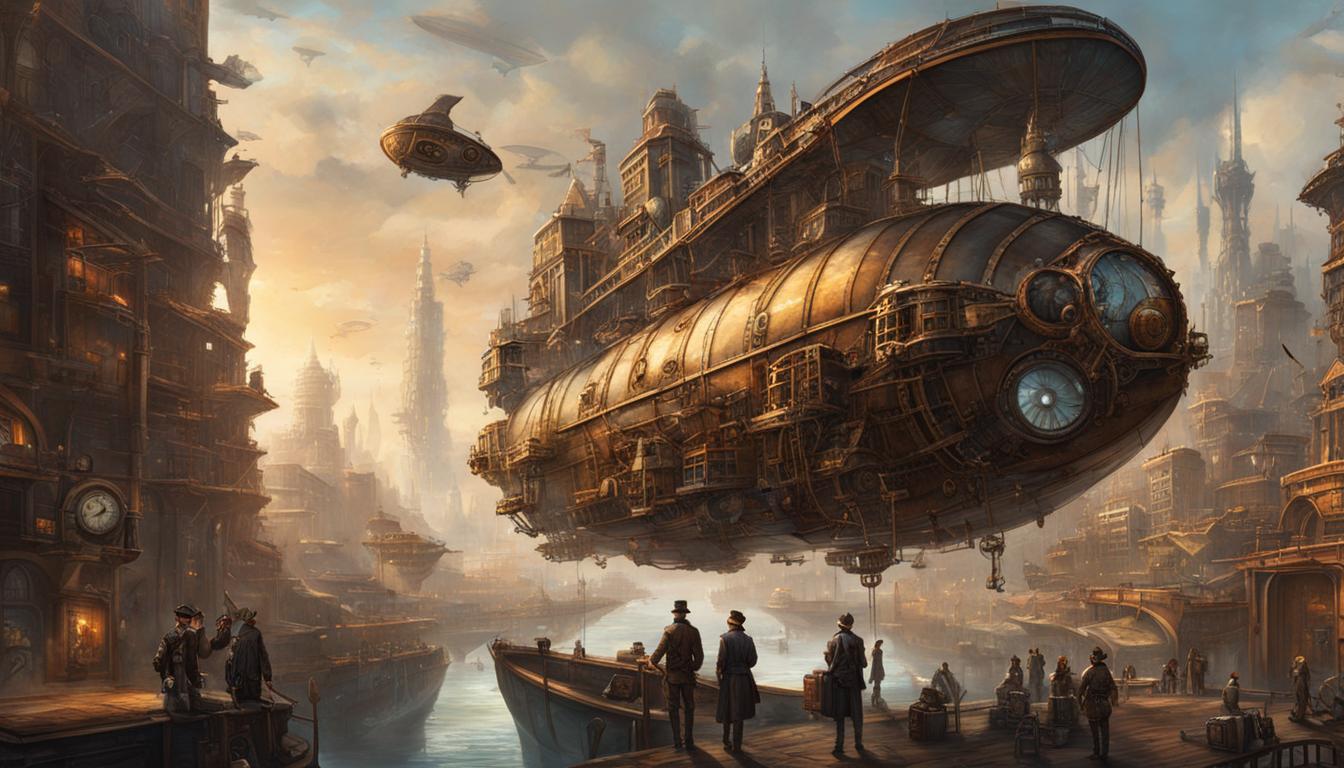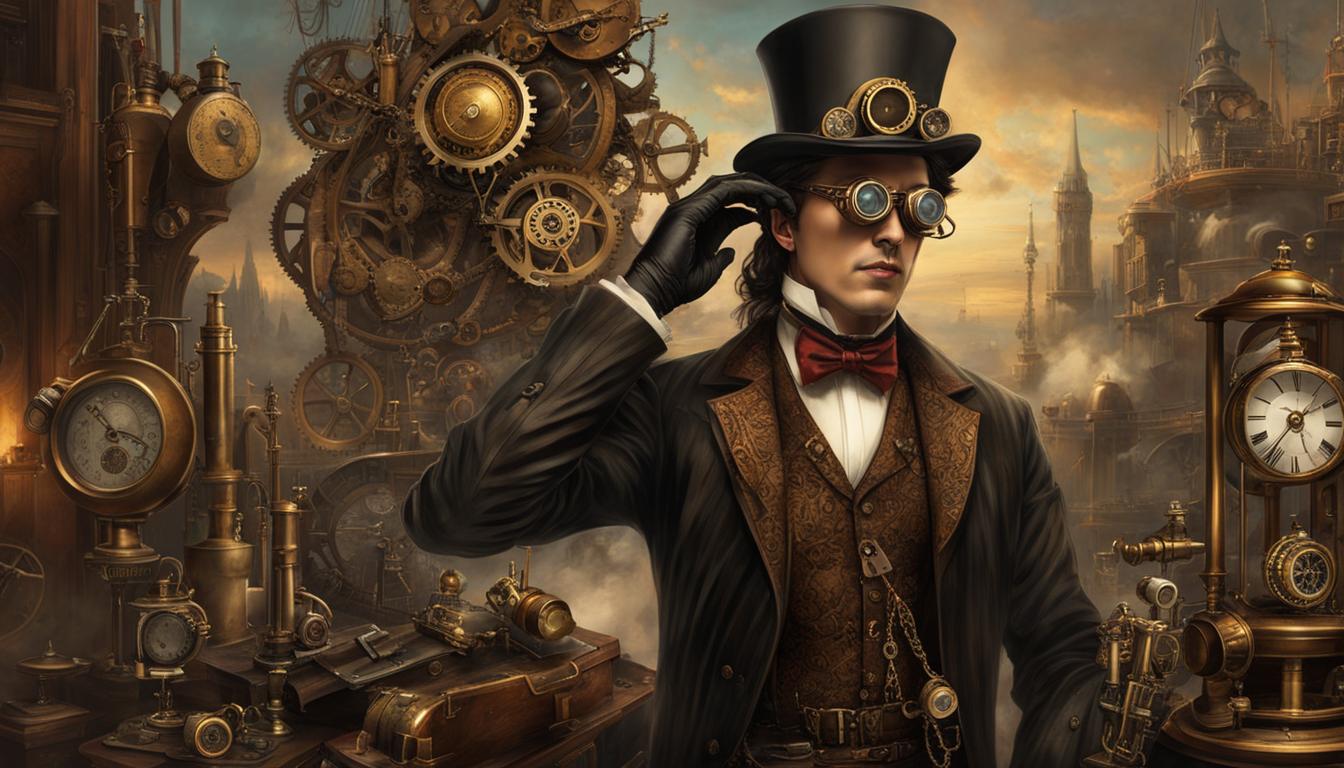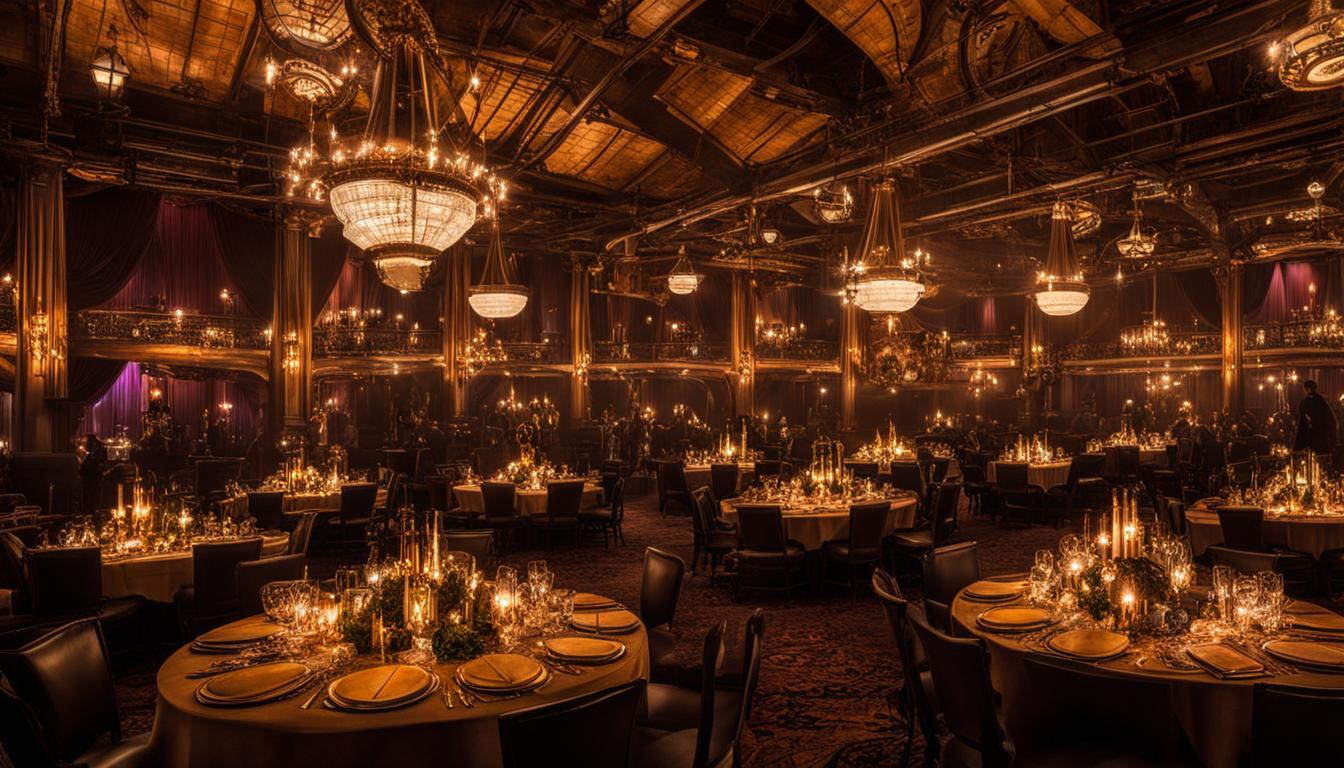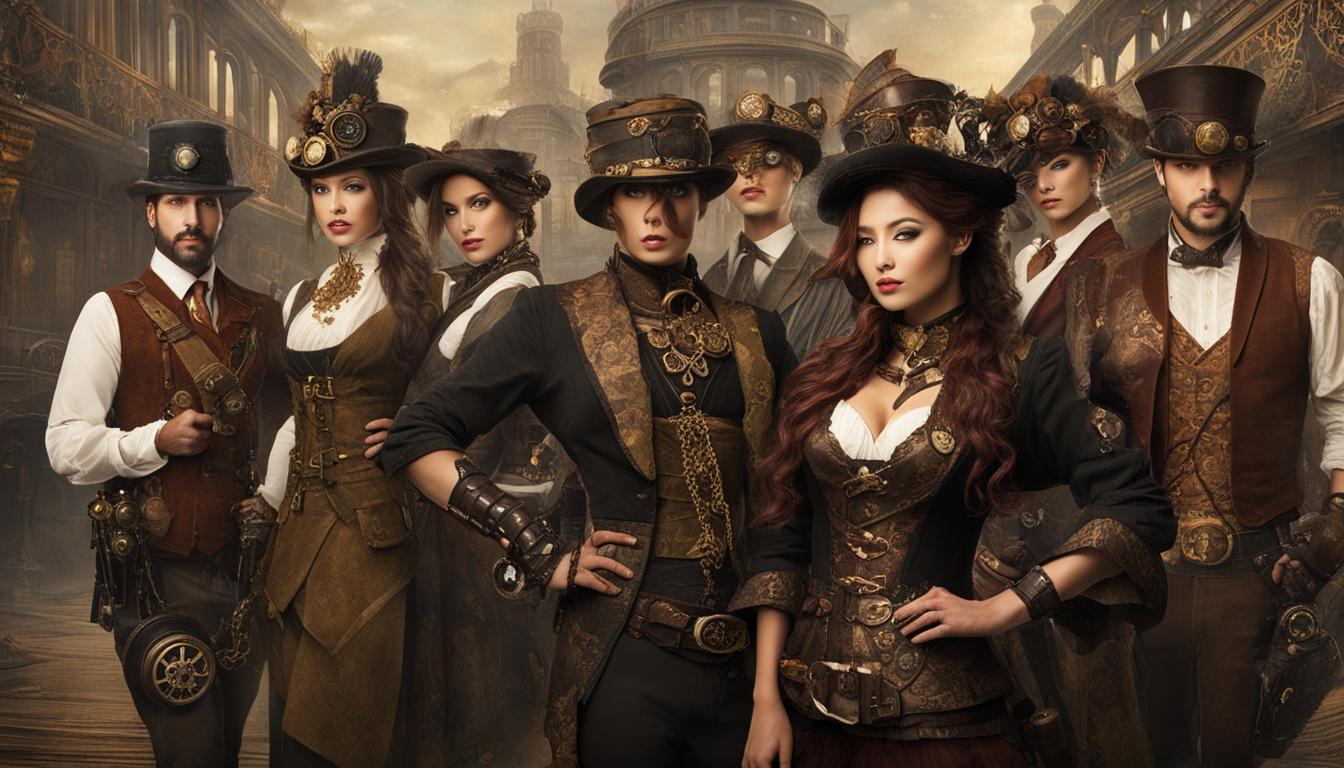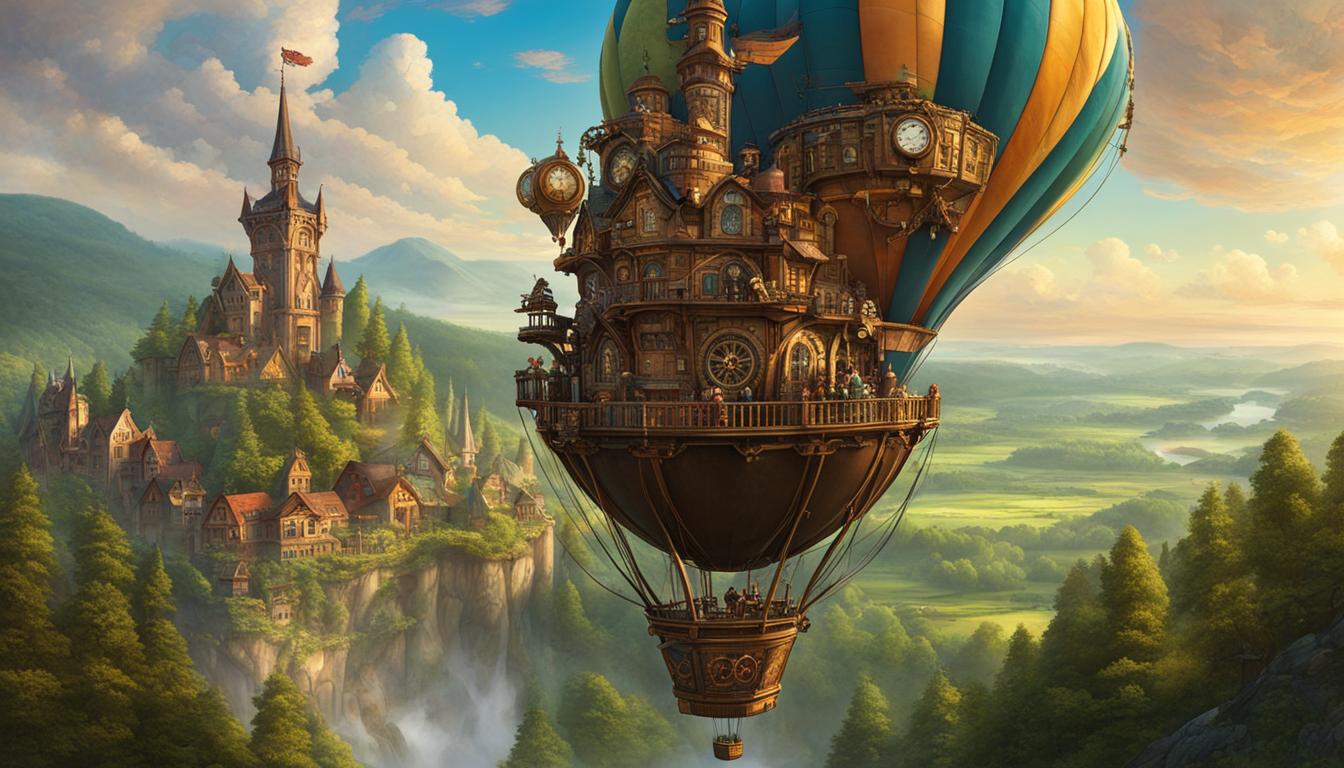The Steampunk Movement, with its fusion of Victorian-era style and steam-powered technology, has captured the imagination of many in recent years. This subculture has extended beyond its literary roots to encompass art, fashion, and music, creating a vibrant and unique lifestyle experience. Steampunk enthusiasts are drawn to the vintage aesthetics of the Victorian era and the ingenious functionality of steam-powered machinery.
Combining elements from the past and the present, steampunk has inspired a multitude of creative expressions. Intricate costumes and accessories, elaborate sculptures, and captivating paintings all showcase the versatility and artistry of this movement. Blending the old with the new, steampunk seamlessly merges historical aesthetics with contemporary themes, resulting in a lifestyle that is both nostalgic and innovative.
Key Takeaways:
- Steampunk combines Victorian-era style with steam-powered technology.
- Enthusiasts appreciate the aesthetics of the Victorian era and the ingenuity of steam-powered machinery.
- The movement has expanded to include art, fashion, and music.
- Steampunk is heavily influenced by the Victorian Era, particularly the Industrial Revolution.
- Key figures in the development of steampunk include literary pioneers and influential creators in film and music.
Historical Context and Influence of Steampunk
The Steampunk Movement draws heavily from the historical context of the Victorian Era, which spanned from 1837 to 1901. This period was marked by significant social and economic transformations, including the rise of the Industrial Revolution and the advent of steam-powered machinery. The Victorian Era’s strict social hierarchy and rapid technological advancements laid the foundation for the unique fusion of aesthetics and functionality that characterizes the Steampunk Movement today.
Originally, Steampunk emerged as a subgenre of science fiction and fantasy literature in the 1980s. It quickly gained popularity and expanded beyond the literary world, captivating enthusiasts from various creative fields. Key figures such as Jules Verne and H.G. Wells played a pivotal role in shaping the genre’s themes and aesthetics, with their works like “Twenty Thousand Leagues Under the Sea” and “The Time Machine” greatly influencing the imagination of Steampunk creators.
As the movement grew, it extended its reach into other forms of media, including film, television, and music. Steampunk’s distinctive visual aesthetic, blending Victorian-era fashion with mechanical and industrial elements, has found its way into visual storytelling. Films like “The League of Extraordinary Gentlemen” and “Hellboy” have incorporated Steampunk elements, captivating audiences with their unique blend of historical context and fantastical imagination.
The Steampunk Movement encapsulates the essence of the Victorian Era, infusing it with a sense of adventure, innovation, and rebellion. By celebrating the Industrial Revolution’s impact and drawing inspiration from key literary and cultural figures, Steampunk has become a vibrant cultural phenomenon that continues to inspire and captivate audiences around the globe.
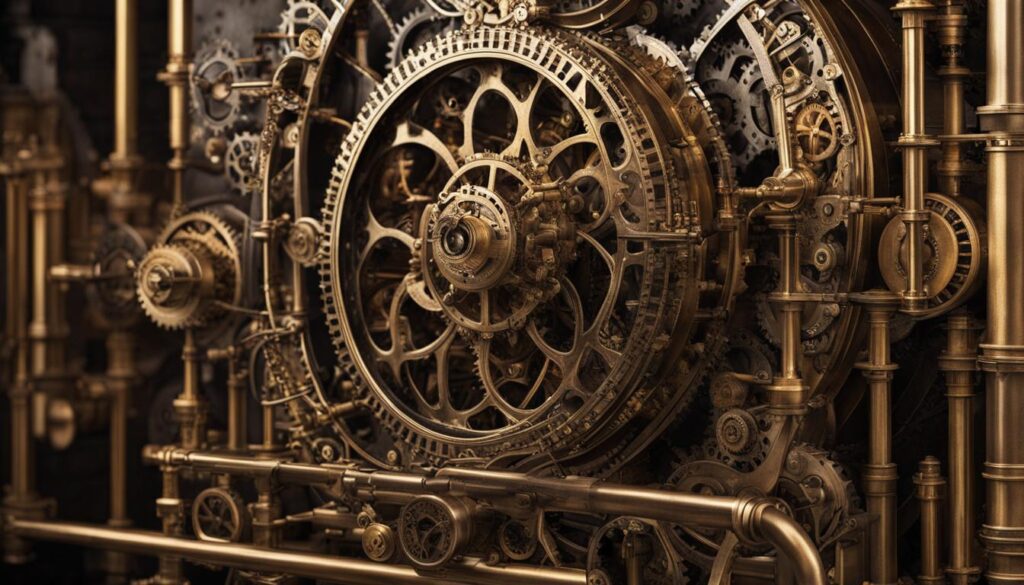
The Origins of Steampunk as a Subgenre
The term “Steampunk” was coined as a subgenre of science fiction and fantasy literature to describe stories set in an alternative version of the Victorian Era. In this fictional universe, steam-powered technology dominates, intertwining with the fashion, culture, and social dynamics of the time. The genre’s pioneering works, like K.W. Jeter’s “Morlock Night” and James Blaylock’s “Homunculus,” laid the foundation for what would become a thriving cultural movement.
Steampunk’s appeal lies in its ability to transport audiences to a bygone era while infusing it with anachronistic elements and imaginative possibilities. The genre encourages exploration of what could have been, juxtaposing historical authenticity with fantastical inventions, airships, clockwork contraptions, and Victorian-inspired fashion.
Key Figures in the Steampunk Movement
Throughout its evolution, the Steampunk Movement has been shaped by numerous influential figures across various artistic disciplines. From authors and filmmakers to musicians and visual artists, these individuals have played a crucial role in expanding the boundaries of the genre and fueling its continued growth.
Notable figures in the Steampunk Movement include Tim Burton, the visionary filmmaker known for his dark and whimsical aesthetic, as well as musicians like Abney Park and Steam-Powered Giraffe, who incorporate Steampunk themes and imagery into their performances. These creative pioneers have paved the way for countless others to explore and contribute to the rich tapestry of the Steampunk Movement.
Steampunk Aesthetic, Fashion, and Media
Steampunk fashion is a captivating fusion of Victorian-era elegance and industrial ingenuity. It takes the grace and refinement of the past and intertwines it with mechanical marvels, adorned with gears, cogs, and clocks. This distinctive blend of vintage and modern influences has not only found its place in the realm of fashion but has also left its mark on visual media, literature, and entertainment.
The allure of steampunk extends beyond the realm of clothing. It has become a powerful aesthetic that enchants various forms of media, creating a captivating visual experience. Steampunk literature draws inspiration from classic works of science fiction and fantasy, transporting readers to a world where steam-powered contraptions and daring adventures reign supreme. From Jules Verne’s iconic “Twenty Thousand Leagues Under the Sea” to contemporary masterpieces, the genre continues to capture imaginations.
Steampunk has danced its way onto the silver screen and television, captivating audiences with its distinctive aesthetic and storytelling elements. Films like “The League of Extraordinary Gentlemen” and “Hellboy” have incorporated the visual splendor of steampunk, immersing viewers in worlds where gears and gadgets shape the narrative. This blending of steampunk with contemporary themes showcases the movement’s versatility and ability to breathe new life into storytelling.
But steampunk’s influence doesn’t stop at the boundaries of the past. It has seamlessly merged with modern design, creating a remarkable union of old and new. The movement’s ability to blend the grace of Victorian elegance with the sleek lines of modernity is a testament to its creative spirit. By combining steampunk with contemporary themes, designers and artists continue to push the boundaries of what is possible and create awe-inspiring creations that leave us wondering what wonders lie beyond the realms of the imagination.
FAQ
What is the Steampunk Movement?
The Steampunk Movement is a subculture that combines Victorian-era style with steam-powered technology.
How has the Steampunk Movement gained popularity?
The Steampunk Movement has gained popularity in recent years due to its unique blend of vintage aesthetics and real-world functionality.
What does Steampunk encompass?
Steampunk encompasses art, fashion, and music, among other creative expressions.
What time period does Steampunk draw inspiration from?
Steampunk draws inspiration from the Victorian Era, which lasted from 1837 to 1901.
Who are some key figures in the development of Steampunk?
Key figures in the development of Steampunk include literary pioneers like Jules Verne and H.G. Wells, as well as film influencers and music contributors.
How does Steampunk fashion combine vintage and modern influences?
Steampunk fashion combines elements of Victorian-era clothing with mechanical and industrial accents, such as gears, cogs, and clocks.
Where can Steampunk aesthetics be seen?
Steampunk aesthetics can be seen in various forms of visual media, including film, television, and art.
What is Steampunk literature?
Steampunk literature draws inspiration from classic works of science fiction and fantasy, while contemporary masterpieces continue to contribute to the genre.
How is Steampunk blended with other contemporary themes and design styles?
Steampunk is often blended with other contemporary themes and design styles, showcasing its versatility and creativity.

